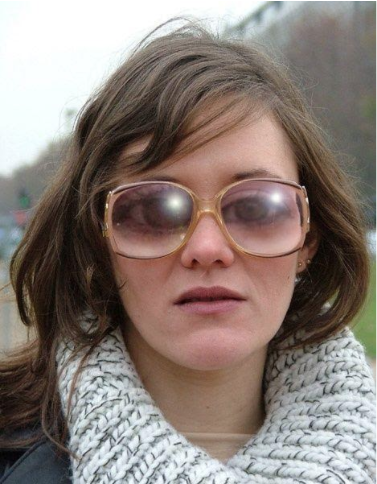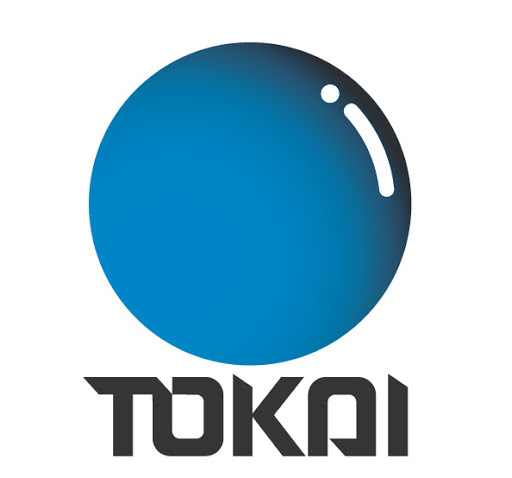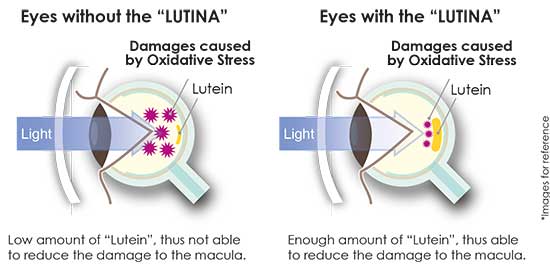The Evolution of Eyewear
In the mid 90’s, I was very new to the Optical industry. I had been wearing spectacles since my childhood, but my true understanding of optics began when I started working at an Independent Opticians in my early teens.
I was introduced to a world of Cartier, Polaris and Lindberg frames, which at the time were only available at exclusive establishments such as Harrods of London. Customers had started wearing spectacles as a new fashion aid. Glasses were no longer big, bulky and boring. They had to serve a purpose, but now, with an added flair.
I used to observe how customers were being encouraged to try something ‘new’, something ‘more striking’ and being advised to come out of their ‘comfort zone’. The comfort zone was ‘plain’, ‘dreary’ and dare I say, ‘heavy’. It was normal to wear large, uninteresting frames. It was ‘ok’ for the spectacles to be ‘weighty’ and look like ‘bottle-tops’. Nobody really complained about ill-fitting glasses, the weight of them, or pressure ‘marks’ on the nose. It was a given that if you’re a spectacle wearer, these compromises came hand in hand with spectacle wear.

Image (1) Courtesy of Quora.com (for illustration purposes only)

Image (2) Courtesy of Walmart (for illustration purposes only)
Fashion Frames and Lens Choices
With the introduction of fashion frames, lenses had to change somewhat to complement the exterior element of this optical appliance. Afterall, spectacles consist of 2 main parts; the frame and the lenses. To enhance the aesthetics of a trendsetting frame, it is essential to couple it with the most appropriate lenses. These lenses have to, therefore, be light-weight and thinner to remain as much as possible within the rims of the frame.
From Glass to Plastic
In the mid 90’s it was still the norm to wear glass lenses. It was so normal in fact that glass was being glazed skilfully into rimless and supra (half-rim) spectacles. But, within a few decades, all of this had changed. With new CE and European Directive’s, health and safety became paramount for eyewear. Prescription frames and lenses are considered as Class 1 medical devices1. The CE marking is a certification that the product meets EU standards for health, safety and environmental protection2. In a nutshell, eyewear must be safe to wear and since glass can shatter so easily, it is no longer the preferred spectacle lens choice. This is not to say that glass cannot be used, but its use is generally restricted to select prescriptions or tempered glass for safety eyewear (protection against some liquids and gasses).
Since glass optical correction was on the decline, plastic lenses took the forefront position. It meant that all the world lens suppliers were competing for the best plastic lenses. The lenses had to be thinner like its glass counterpart. They had to be lightweight and the coatings had to be harder and stronger than predecessor formulas.
Thin lenses give rise to peripheral distortion and image deformation, as the lens material or index changes. This was the main challenge for the lens manufacturers but with advanced lens moulding and digital calculations, the lenses are getting thinner and lighter without compromising the vision. This means that lenses that were not suitable for a specific frame 20 years ago are now, no longer a challenge.
Patients of the yesteryears appreciated that their prescriptions restricted their choice of frames and lenses. Today, as opticians, we are mainly challenged by the demands and expectations of the modern consumer. Current choices of frames and lenses are leaps and bounds ahead of any options that were available 2 decades ago.
Lens Technology
Over the years, I have come to appreciate the lens companies for their skill set in producing some of the finest quality lenses. Their design and technology have resulted in the most superior lens optics and finishes. Towards the end of 2015 whilst working for a boutique practice in Kensington, London, I was introduced to a lens company that simply bowled me over. Whilst most lens companies are well branded and have become household names, this company was lying low and wowing the opticians with their newest lens technology. Today, I consider this to be one of my favourite lens choices and the company is TOKAI.

Image (3) Courtesy of Tokai Optical
Who are TOKAI?
Tokai is a Japanese ophthalmic lens manufacturer who produces anything from simple prescriptions to the upper-end bespoke prescription requirements. As a family-owned company, Tokai has more than 80 years of experience within the lens manufacturing trade3. Driving lens technology forward, they have introduced to the market the ‘world’s thinnest’ plastic lens4. This product is a 1.76 index, double aspheric, a freeform lens which simply means that it is the flattest lens on the market using the highest index monomer, coupled with special curves and innovative digital engineering to deliver excellent aesthetics and visual performance. These high index materials are available in single vision powers, occupational and varifocal corrections. Tokai have surpassed all other competitors in the optical industry by engineering a super-thin material that can be produced with many extra features.
TOKAI Product Range
Customers who have prescriptions in the high-powered ranges, often have to compromise when it comes to lens extras. However, with the Tokai catalogue, these patients finally have better options for their prescriptions. Tokai can produce 1.76 thin lenses that are tintable to 85% absorption levels (the desired tint level for sunglasses) and the same material is available with the photochromic option. Another key feature to mention is that the material can be produced to various base curves. This pertains to the curve form of the frame (think of Oakley ophthalmic frames or sunglasses that ‘wrap-around’ the face).

Oakley – Crankshaft: Image (4) Courtesy of ‘P Buy Sites’
To further complement their catalogue, Tokai produces a 1.7 lens that supersedes the competing 1.67 material on the market. Not only is the 1.7 thinner but the optics is clearer with reduced peripheral aberrations. It is the perfect solution to rimless, supra and in-line glazing since the material has high tensile strength and flexibility. Should patients desire a thin lens with a ‘flash mirror’ effect, it is now possible with the Tokai 1.7 lens.
TOKAI Coatings
Needless to say, that with such an innovative lens company, Tokai will not disappoint when it comes to the lens coatings. The range includes superior levels of ‘multi anti-reflective’ finishes. In the custom range, there are an array of coloured anti-reflective coatings which give all the benefits of Tokai’s high-grade coatings but with the added touch of a ‘colour finish’ to compliment the frame selection. The coatings are designed to be scratch-resistant, water & oil repellent, easy to clean and reduced crazing (a lot of coatings start to breakdown and craze when exposed to heat for example). These coatings are exactly that; they are not to be mistaken with ‘colour tints’.
TOKAI – Lutina Coating with UV Protection
The premium standard of coatings offered by Tokai is the LUTINA coat. The name ‘Lutina’ has been created by Tokai to correlate with the part of the eye that Lutina is designed to protect. Lutein and zeaxanthin are powerful antioxidants that are found in plants as well as the body. These antioxidants act as the defence mechanism against unstable molecules called free radicals5. Lutein and zeaxanthin are found in high concentrations in the ‘macula’ of the human eye6. The antioxidants in the eye protect the retina and reduce the oxidative damage that leads to ‘macular degeneration’ (AMD). Unfortunately, the levels of Lutein and zeaxanthin diminish with age. Coupled with excessive UV exposure, this leaves the retina open to irreversible damage. It is important to eat foods rich in these two nutrients and consider eye supplements that ‘up’ the levels of protection.

Image (5) Courtesy of Tokai
Another trusted method of defence would be spectacle lenses that incorporate a ‘sunscreen’ for the eyes. The Lutina coat is exactly that. This coating shields the eye, and its orbit, from the most harmful effects of ‘High Energy Violet’ light. This coating filters harmful UV rays to protect the eye against oxidative stress and thus, reducing the onset of cataracts and AMD. Children are also susceptible to UV damage because their eyes have not fully developed the natural nutrient-rich protection that prevents UV transmission to the retina.

Image (6) Light Spectrum
The Lutina protective coating would be ideal for patients of all ages. Since UV damage to the eye is cumulative7, measures should be taken to shield the eyes from UV damage from a young age. People who spend long days exposed to harmful light would likewise benefit from the Lutina filter. Post- cataract patients should be advised to protect their new Intra-ocular lens with UV protection to avoid retinal issues in the future.
The Lutina filter, although referred to as a coat, is actually imbibed in the monomer of the spectacle lens. Hence, the protection against HEV light remains intact, regardless of front surface damages.
Continue reading Part 2: The Real-Patient Case Studies
-
Gov.uk – medical devices regulation and safety
-
Gov.uk – manufacturing – CE marking
-
Tokaioptical.co.uk
-
Tokai.be/1-76/
-
Healthline.com – nutrition
-
Allaboutvision.com
-
Ncbi.nim.nih.gov – The photobiology of Lutein & Zeaxanthin in the eye, by Roberts, 2015.
Posts by Oodo may include affiliate links. This means that we make a small commission from referrals and purchases at no extra cost to you. Thank you for your kind support.








